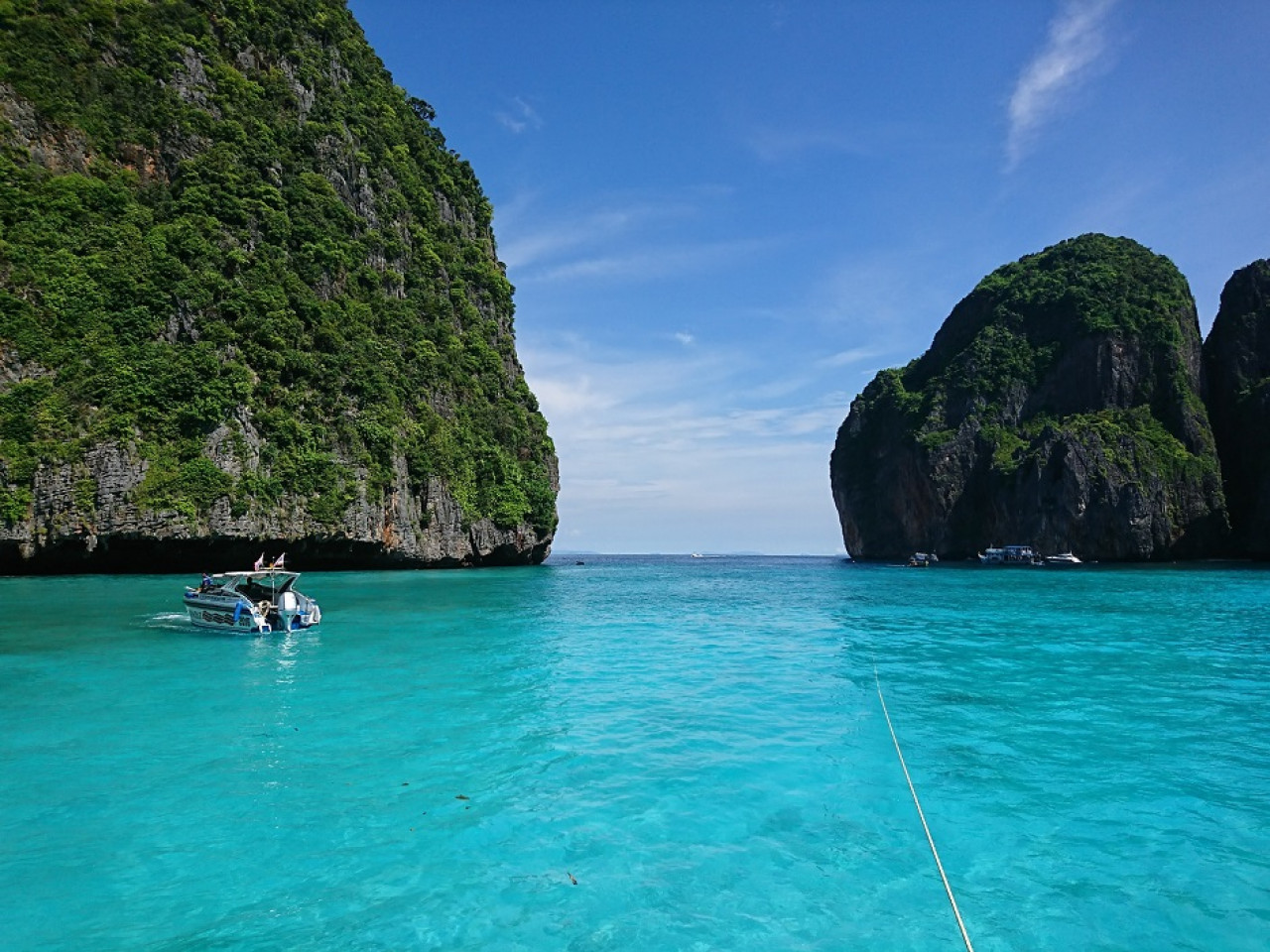Located in the Andaman Sea in Thailand’s Krabi Province, Maya Bay came to world prominence after the movie Beach, starring Leonardo Di Caprio, was shot on the location.
Maya Bay will close for tourists this month and will open in September this year, after a four-month closure.
The authorities plan to open the bay in September with significant changes to how tourists interact with the area. The boats carrying tourists will then have to bring tourists from the back of the bay. They also plan to limit the number of entry passes to 2000 entries per day.
Maya Bay’s beach area is not larger than Artificial Beach in Male’. The sea area, however, is much larger. There is immense space to accommodate a large number of snorkelers, swimmers and divers. According to the Tourism Authority of Thailand for Krabi, over 3000 visitors from 40 countries visit Maya Bay each day.
Thailand’s Department of National Parks, Wildlife and Plant Conservation, the Tourism Authority of Thailand Krabi Office and Singha Estate have successfully worked on a coral propagation project on Yoong Island for the past two years. They cordoned an area on the island from boats and tourists to plant corals and allow the reef areas to take life and grow. Now, the project has borne much anticipated results.
This success is the motivation behind the stakeholder’s initiative to replicate the project in Maya Bay.
According to Assistant Professor Thon Thamrongnawasanwat, a key figure in the coral propagation project, reef and coral are often destroyed due to the number of tourist who are careless during their visits to these islands. The boats who ferry the tourists also contribute to the destruction of the corals. The long boats which go on top of the reef and sometimes anchor on the reef, have been brutal to the reef. The speed launches with their powerful engines propel countless sediments to the reef and in the long term, these activities are detrimental to the reef and its marine life. Subsequently, the reefs near Maya Bay have slowly withered and died.
Presently Maya Bay has little evidence of living reef.
This begs us to think. What is our take from Thailand’s Krabi experience?
The tourist arrival numbers in Krabi has increased in the recent years, especially due to the increase in Chinese tourist inflow. The region now sees over seven million visitors each year. Following this endeavor to ever increase arrivals, Krabi province neglected protecting its environment. Today, they have to make serious efforts to regulate and rebuild what has been lost. They are now faced with the question of not only how to bring back the region’s former beauty to attract tourists and preserve the regions livelihood, but also the question of how they can preserve the beauty for the sake of future generations.
Thailand’s Tourist Authority Krabi Office and department of national parks’ foremost priority now is to conserve the region’s marine ecosystem and environment. The pursuit to heedlessly increase tourist arrival numbers is now a policy of the past.
Our country is now at a stage of focusing continuously on increasing tourist arrival numbers. We are setting up an airport which can handle seven million tourists each year. We are also relentlessly seeking every possible avenue to ever increase tourist arrival. Does this not make us wonder if we too are heading down the Krabi route?
If we look to draw lessons from Thailand’s Krabi experience, the message is simple and clear. Our sole ambition must not be to pursue the unchecked increase in visitor arrivals. Our goal must be to equally emphasize on protecting our environment and to sustain our resources for the benefit of future generations.
The Maldivian government and private investors must work hand in hand to realize this result. I believe we already have legislation that can protect our ecosystem. However, some form of policing and monitoring must be put in place to enforce this legislation and effective steps must be taken against those who abuse the law.
There are around nine million different species of coral in the sea. According to Dr. Thon, the coral in the Andaman Sea and our region in the Indian ocean have many similarities. In fact, the coral breed is almost the same in both seas. Collaborative effort without much confusion, therefore, is very possible.
Dr.Thon was recently asked in an interview if he worries about cost of closing Maya Bay. His response to this was quick and firm. “We don’t worry about how much we will lose right now. If you can tell me how much our future generations will lose, I will tell you how much we will lose by closing the bay,” he said.
https://www.youtube.com/watch?v=I0iqsC8DxVo



